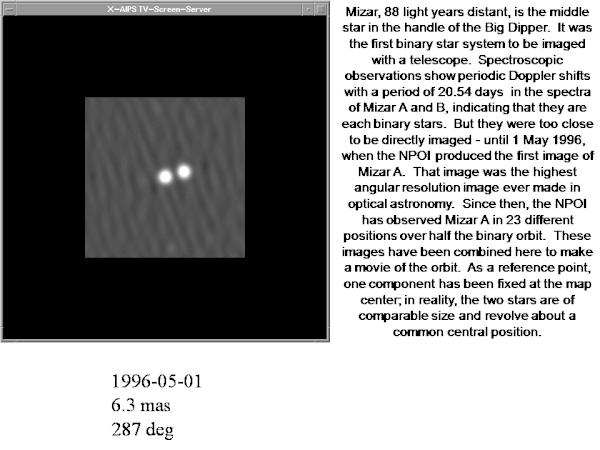The Orbital Motion of Mizar A
Mizar, 88 light-years distant, is the middle star in the handle of the Big Dipper. It was the first binary star system to be imaged with a telescope.
Spectroscopic observations show the periodic Doppler shifts with a period of 20.54 days in the spectra of Mizar A and B, indicating that they are each binary stars. But they were too close to be directly imaged - until 1 May 1996, when the Navy Precision Optical Interferometer (NPOI) produced the first image of Mizar A.
That image was the highest angular resolution image ever made in optical astronomy. Since then, the NPOI has observed Mizar A in 23 different positions over half the binary orbit. These images have been combined here to make a movie of the orbit.
These animations come courtesy of Dr. Christian A. Hummel, of the European Southern Observatory (ESO), and are compiled from those observations made with the Navy Precision Optical Interferometer (NPOI).
As a reference point, one component has been fixed at the map center; in reality, the two stars are of comparable size and revolve about a common central position.

